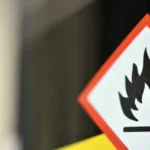Navigating OSHA citations can be a complex and critical process for employers. When OSHA issues a citation, it must be in writing, consist of allegations describing the nature of the violation, and include a reference to the Act, standard, rule, or order alleged to have been violated. Upon receiving an OSHA citation, prompt action becomes imperative. You have a right to defend against the allegations, and proactive measures are paramount because OSHA citations can substantially affect your business.
The consequences of an OSHA citation include more than just fines; a business reputation, increased insurance premiums, and a poor safety record can negatively impact a business. The hidden costs of an Occupational Safety and Health Administration (OSHA) citation extend far beyond the initial penalty. While the immediate financial burden may be evident, including fines and potential legal fees, the true costs often lie in the aftermath. Businesses may suffer from damaged reputations, loss of employee morale, and diminished productivity. Addressing the cited safety violations necessitates time and resources for corrective actions, training, and implementation of new safety measures. Failure to address underlying safety concerns can lead to future accidents, increased insurance premiums, and potential litigation. While your first instinct when facing an OSHA citation might be to pay the penalty and move on, it’s crucial to understand that the true cost of an OSHA citation goes far beyond the initial fine. Businesses often underestimate the ripple effects of an OSHA citation on their operations, finances, and reputation. Here are the key ways an OSHA citation can impact your business:
- Loss of Reputation
An OSHA citation can damage your business’s standing in the industry. Clients, partners, and prospective employees may view your organization as unsafe, making it harder to attract new opportunities. - Negative Publicity
OSHA violations often become public record, and depending on the severity, they may attract media attention. Negative headlines can tarnish your brand’s image, especially in competitive industries where safety is a top priority. - Inability to Bid on Certain Jobs
Many contracts, particularly with government agencies or large corporations, require businesses to have a clean safety record. An OSHA citation can disqualify you from bidding on lucrative projects, impacting your revenue streams. - Loss of Contracts or Clients
Existing clients may choose to cut ties if they perceive your workplace as unsafe, particularly if they fear association with your business could harm their own reputation or operations. - Reduced Employee Morale
OSHA citations signal safety concerns to your workforce. Employees may feel undervalued or unsafe, leading to lower morale, decreased productivity, and higher turnover rates. - Cost of Retraining
Correcting the safety issues that led to the citation often requires retraining employees. This incurs additional costs and diverts time and resources from regular business operations. - Lost Productivity
Addressing OSHA violations often involves temporary shutdowns, investigations, and corrective actions. These interruptions can significantly affect your business’s output and revenue. - Abatement Costs
Beyond paying the fine, you must fix the cited safety violations, often within a set timeframe. Abatement costs can range from minor adjustments to significant capital expenditures, depending on the nature of the hazard. - Risk of Future “Repeat” or “Willful” Violations
If the same or similar violation occurs in the future, the penalties escalate. Repeat violations can carry fines up to 10 times the original amount, while willful violations can lead to even harsher financial and legal consequences. - Increased Insurance Premiums
An OSHA citation often signals a higher risk of workplace injuries, leading to increased workers’ compensation insurance premiums and general liability costs. Over time, these higher premiums can add up to significant financial burdens. - Increased Scrutiny Under the Severe Violator Enforcement Program (SVEP)
Businesses cited for serious, willful, or repeated violations may be placed under OSHA’s SVEP, subjecting them to more frequent inspections, audits, and public disclosure. This program not only increases operational disruptions but also magnifies the reputational damage. - Legal Costs
In some cases, OSHA citations can result in legal challenges, either through appeals or lawsuits from employees injured due to the cited conditions. Legal fees and potential settlements can quickly escalate beyond the cost of the initial fine. - Strained Business Relationships
Vendors, suppliers, and partners may reconsider their association with your company if they believe the OSHA citation reflects poorly on their own commitment to safety and compliance. - Long-Term Financial Impact
Beyond the immediate financial costs, the lingering effects of an OSHA citation—such as lost opportunities, reduced efficiency, and higher operating expenses—can harm your bottom line for years to come.
An OSHA citation is not just a one-time expense—it’s a long-term liability that can weaken your business from multiple angles. By prioritizing safety, investing in regular site audits, and fostering a culture of compliance, you can avoid these costly consequences and protect your workforce and your business’s future.
When your company is confronted with an OSHA citation, it’s essential to follow a precise set of steps to address the situation effectively. Here’s a general guideline on what a company should do:
Step 1: Review the Citation
First, carefully examine the citation and grasp the exact nature of the alleged violations categorized by OSHA, including willful, serious, other-than-serious, de minimus, failure to abate, and repeated violations. Review the citation thoroughly and understand the specific violations, the standards involved, and the proposed penalties. Note the deadlines for responding to the citation.
Step 2: Correct the Hazard
The next step is to rectify the identified hazard promptly. Develop an action plan and initiate corrective measures. Maintain documentation of each undertaken action to establish a record of your safety efforts, including photographs, training records, and other relevant information. If your company lacks a safety manager, consider contacting a safety expert who can provide guidance on promptly addressing any hazards in accordance with OSHA standards.
Step 3: Post the Citation
Place the citation (or a copy of it) at or near the location where the alleged violation occurred, as mandated by OSHA. This action aims to inform employees about potential hazards they may encounter. The citation should remain posted for a minimum of three working days or until the violation has been rectified, whichever duration is longer. It’s important to note that even if you decide to challenge the citation, you must still post it. Failure to do so can lead to fines for each violation.
Step 4: Request an Informal Conference
Act promptly to request an informal conference -within 15 working days (excluding federal holidays) of receiving the citation. Although this step is not mandatory, it is strongly recommended. Don’t miss the deadline! To contest an OSHA citation, you can write a letter and email it to the inspector, Assistant Area Director, or Area Director. Engaging in an informal conference can yield several advantages, such as potential reductions in penalties, extensions of abatement timelines, removal of citations, and more. You can also explore alternative avenues for reducing penalties, including highlighting a strong safety track record, seeking adjustments based on your company’s size, demonstrating a good-faith commitment to safe practices, and other strategies. Consider enlisting the assistance of an OSHA attorney or safety expert during this negotiation process to present your case effectively.
Step 5: Make a Decision: Accept or Object?
If you accept the citation, you should remit the proposed penalty and rectify the situation by the specified date outlined in your citation. Ensure timely payment to avoid further complications. Furthermore, you must furnish an Abatement Certification letter to the OSHA officer as evidence of hazard correction. It’s essential to note that failing to address the hazard adequately may result in an additional violation for failure to abate, which can entail additional fines.
If you disagree with the citation, you must formally contest it in writing and postmark it no later than the 15th working day from the day you received it or send it electronically by email to the OSHA Area Director. Working days are Monday through Friday, excluding federal holidays. This written notice is called a “Notice of Intent to Contest.” Failing to contest the citation within this timeframe will result in it becoming a final order, immune to review by any court or agency. Remember that oral notices during an informal conference do not replace the requirement that the employer’s Notice of Contest be in writing. Once the Notice of Intent to Contest has been duly submitted, your legal obligation to pay penalties and carry out abatement actions is temporarily suspended until the matter has been resolved. Depending on the complexity of the citation and the potential consequences, you may want to consult with legal counsel or a safety consultant experienced with handling OSHA citations. They can provide guidance on contesting citations and representing your interests before the Occupational Safety and Health Review Commission.
Step 6: Prevent Future Violations
Implement a proactive approach to workplace safety to prevent future OSHA violations. Regularly assess and update your safety programs, conduct safety audits, and encourage employee involvement in safety initiatives. Continuously monitor your workplace for compliance with OSHA regulations and update safety policies and procedures to adapt to changing conditions and regulations.
Engaging with OSHA, understanding its guidelines, and developing a comprehensive plan to rectify the violations are crucial steps for successfully navigating OSHA citations. OSHA citations can have serious legal and financial consequences, so taking them seriously and appropriate action is important.
Before assuming you must accept the citation and pay the fine, contact us to discuss your options and next steps. We have decades of experience working with companies as they navigate OSHA citations. We’d gladly discuss your situation and guide you through the process. Contact us today at 919-417-2139.


